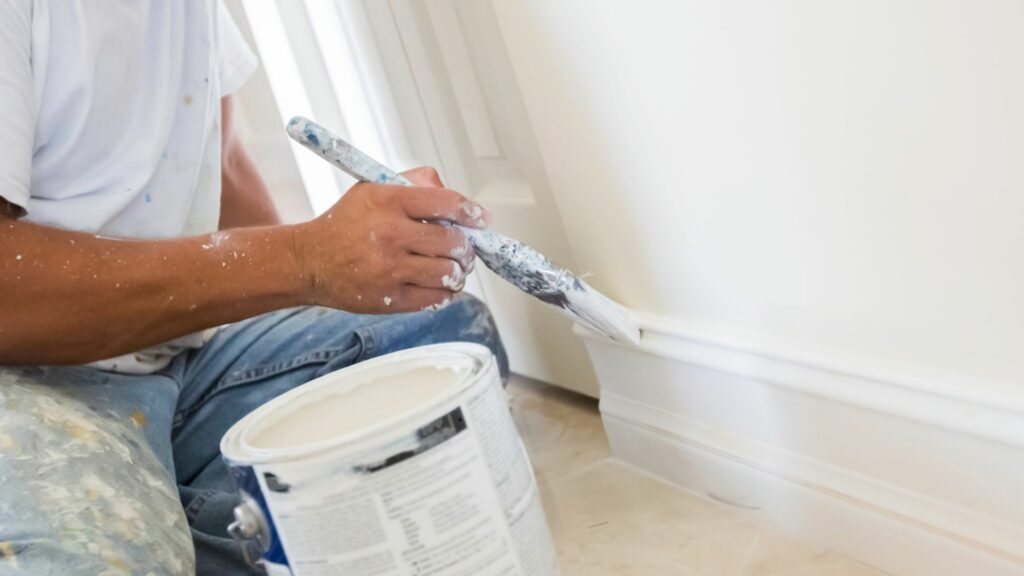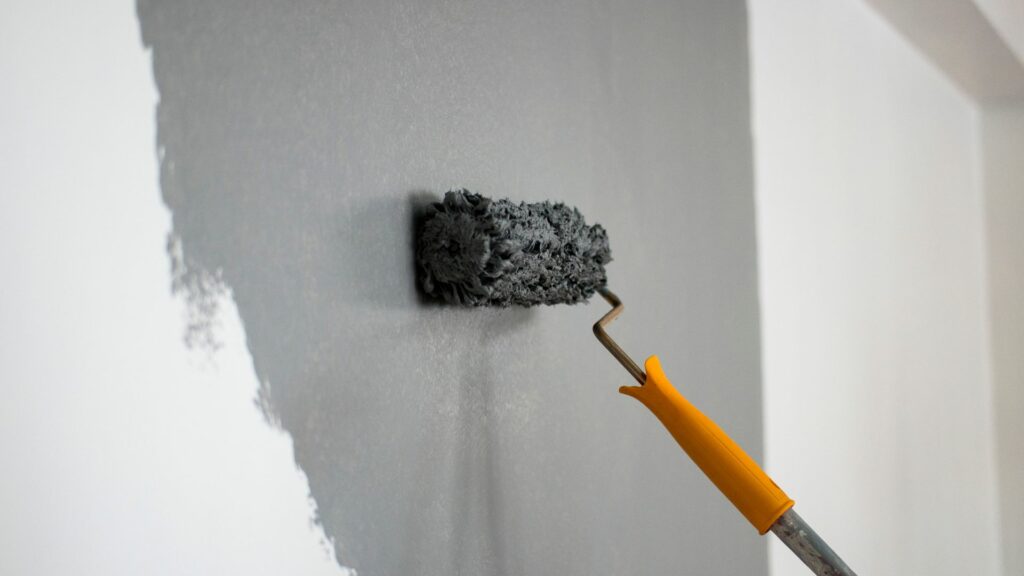A quality paint job can transform a space, making it look fresh and polished. At 403-PAINTER, we know how important a well-done paint job is. This blog will go over the key elements that make a paint job great and point out some common issues to avoid. We’ll talk about paint quality, attention to details like joints and edges, handling knobs and fixtures, ensuring smooth surfaces, and achieving consistent paint and even color coverage.
Paint Quality
Using high-quality paint is essential. Good paint lasts longer, looks better, and is easier to clean. It may cost more upfront, but it saves money in the long run by reducing the need for frequent repaints. High-quality paint also provides better coverage, meaning fewer coats are needed.

Attention to Joints and Edges
Sharp, clean lines where walls meet ceilings and corners are a sign of a great paint job. This attention to detail makes the overall look crisp and professional. Achieving this requires careful taping and steady hands. Poorly done joints and edges can make the whole job look sloppy.
Fixtures, and Faceplates
Removing or properly masking knobs, fixtures, and faceplates before painting is crucial. Paint on these elements looks unprofessional and can be hard to remove. A great paint job will have these areas clean and free of paint, showing that the painter paid attention to every detail.

Smooth Surfaces
Preparation is key to a smooth surface. This includes sanding, filling holes, and priming. A smooth surface ensures the paint goes on evenly and looks flawless. Skipping these steps can result in a bumpy, uneven finish that detracts from the room’s appearance.
Consistent Paint and Even Color Coverage
Consistent paint application and even color coverage are vital. This involves using the right techniques and tools. Uneven color or streaks can ruin the look of a freshly painted room. Using quality brushes and rollers and applying the paint correctly ensures a uniform finish.
Negatives to Avoid
- Roller Marks: These lines are caused by improper roller technique. They can be avoided by using a high-quality roller and applying the paint evenly.
- Drips and Splatters: Drips occur when too much paint is applied at once. They can be prevented by not overloading the brush or roller and by working carefully.
- Patches or Thin Spots: These happen when the paint is not applied evenly or when too few coats are used. Ensuring proper coverage and applying multiple coats as needed can prevent this.
- Obvious Brush Strokes: Visible brush strokes on walls or windows can be avoided by using the right brush and applying the paint smoothly and evenly.
A great paint job involves using high-quality paint, paying attention to details like joints and edges, properly handling knobs and fixtures, preparing surfaces for smoothness, and ensuring consistent application and even color coverage. At 403-PAINTER, we pride ourselves on our expertise and commitment to delivering top-notch paint jobs. Contact us for all your painting needs and experience the difference a professional paint job can make.

